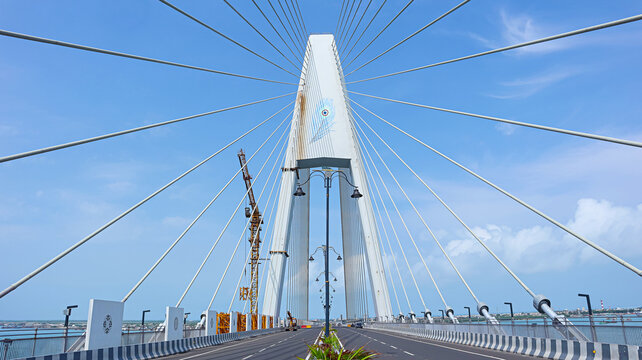Contact Us
RoadVision AI
Private Limited
Office No. 308 & 310, B Block
Ansal Chamber - 1, Bhikaji Cama Place,
Near Engineers India Limited (EIL) Bhawan, New Delhi - 110066
© 2024 | RoadVision AI | All rights reserved
The Indian Roads Congress (IRC) is the primary authority in India for establishing technical standards for road and bridge construction. One of its essential publications, IRC:SP:67-2005, provides comprehensive Guidelines for the Use of External and Unbonded Prestressing Tendons in Bridge Structures. This guideline serves as a crucial reference for engineers and designers, ensuring structural efficiency and durability in prestressed concrete bridges.
Prestressing is a widely adopted technique that enhances the load-carrying capacity of bridges by introducing pre-compressive forces. The use of external and unbonded prestressing tendons offers advantages such as ease of maintenance, reduced material usage, and improved stress distribution.

This IRC Code covers the design, detailing, materials, protection, and applications of external and unbonded prestressing tendons. The key aspects include:
The code is applicable to new bridge constructions, retrofitting, and strengthening of existing structures.
The use of unbonded prestressing tendons is categorized into three main applications:
These methods ensure that bridges remain structurally sound, safe, and cost-efficient over their service life.
Unlike bonded tendons, unbonded tendons do not adhere to concrete, making them more flexible in stress redistribution. However, they require anchorage points and deviators to maintain stability and effectiveness.
The design philosophy follows Limit State Method (LSM), ensuring compliance with:
The applicable load factors are derived from IRC:6-2000, with prestressing force variations considered for different conditions.
The shear capacity of a bridge with external tendons is assessed using:
Materials must meet the specifications of IRC:18-2000. Suitable prestressing steels include:
Sheathing must be leak-tight and pressure-resistant, with materials such as:
Anchorages are critical components that transfer forces to the concrete structure. IRC:SP:67-2005 mandates:
To ensure long-term durability, prestressing tendons must be protected using:
External tendons allow visual inspection and force monitoring, reducing the need for costly repairs.
Unbonded tendons provide flexibility in load redistribution, enhancing bridge resilience and earthquake resistance.
With optimized material usage and simplified construction, external prestressing offers cost-effective solutions for bridge engineering.
Unbonded prestressing is widely used for bridge rehabilitation projects, extending service life without major modifications.
The IRC:SP:67-2005 serves as an essential guideline for the design, detailing, and application of external and unbonded prestressing tendons in bridge structures. By implementing these provisions, engineers can enhance bridge longevity, optimize structural efficiency, and ensure long-term durability.
RoadVision AI is revolutionizing road infrastructure development and maintenance with its innovative solutions powered by computer vision AI. By leveraging advanced technologies, the platform conducts comprehensive road condition monitoring and traffic surveys, enabling early detection of surface issues like potholes and cracks for timely repairs and enhanced roads. Through traffic congestion analysis, RoadVision AI provides data-driven insights to address traffic congestion challenges and optimize road usage. With a focus on building smarter and more efficient road infrastructure, RoadVision AI ensures full compliance with IRC Codes, helping engineers and stakeholders reduce costs, minimize risks, and improve road safety and transportation efficiency.